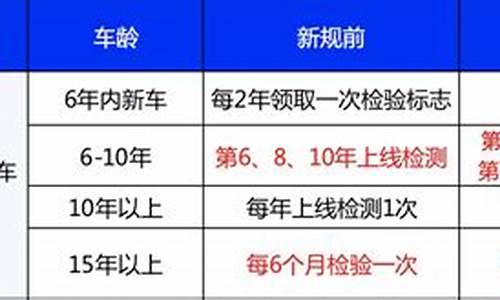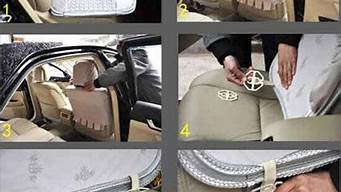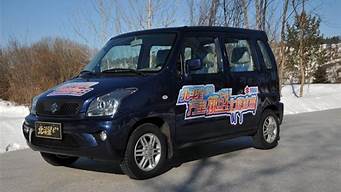shuttle mission
接下来,我将为大家解答有关shuttle mission的问题,希望我的回答对大家有所帮助。现在,我们就开始探讨一下shuttle mission的话题吧。
1.帮忙翻译一下~
2.英语演讲稿:英语演讲稿:The Space Shuttle
3.急要八年级人教版下册英语单词,分开单元,谢谢
4.美国宇航局历次航天任务代号(STS-***)和任务内容?
5.急!!!英译中,有重谢Shuttle cleared for return to Earth
6.有谁知道关于神州六号的英语短文

帮忙翻译一下~
Line Description
In Caiyunzhina, in the depths of remote Yunling, there is a beautiful magical place - Lijiang. Local honest here Local honest here, Xiongqi Jun natural landscape you do not wish to leave and forget the back, singular unique ethnic customs, you scattered, Xinzuishenmi. Bright, beautiful white clouds, the holy snow-capped mountains, dream-like Bik Woo, is full of poetic……
Lugu Lake in Ninglang Yi Autonomous County of Lijiang Yongning Township in the mountains, elevation 2,685 meters, the lake area of 52 square kilometers, with an average depth of 45 meters, the lake Chengbi, visibility of 12 meters. More amazing is that the lake with the color changes in the sky or the red, or blue or gray changes, mysterious and unpredictable. Lugu Lake living in the banks of a branch of the Naxi - Mosuo people still retain the "non-married men and women do not marry" in the morning and from a "Axia" take marriage system, the world said the "daughter" and " matriarchal society living fossil. "
Scheduling
Day 1: Departures - Lijiang (self-catering)
Lijiang to aircraft (or cars), the hotel where he was staying. Living in Lijiang
Day 2: Lijiang - Lugu Lake (including breakfast lunch and dinner)
After breakfast, travel to her country Lugu Lake (203 km), along the Jinsha River Now, small Liangshan scenery, panoramic viewing booths aerial Lugu Lake, national scenic areas by Zhucaochuan Tour - Lugu Lake, sentiment Mosuo people 3 never (Lake boat on boat people, the people singing), the appreciation of the rare plants plateau wave Hai Ye cauliflower, and the Treasury than in the Tour Island, Lamamiao, overlooking Gamla Goddess Hill, at their own expense appreciate Mosuo evening campfire. Mosuo residential living
Day 3: Lugu Lake - Lijiang (including breakfast lunch)
After breakfast matriarchal clan Mosuo people home visits, visits Mosuo Folk Museum (Experience walk marriage customs), the car returned to Lijiang. Living in Lijiang
Day Four: Lijiang - Yulong Snow Mountain (including breakfast lunch)
Yulong Snow Mountain line: Take the tramway Tour Maoniuping Yulong 13 peak of Hanhai, Baishui River, the group scattered around 15:00 pm, the end of the landscape happy trip!
Comprehensive Price: 1,000 yuan / person (3,200 and Mission)
The actual price, whichever is to call! 5 or more, there will be concessions!
Booking Hotline: 24-hour telephone
Price includes: 2 nights hotel, one night residential Lugu Lake, as early as 4 dinner 3 (standard meal for the team dinner, table 10 people, eight soup), the first in the Road tickets for attractions; area air-conditioned coaches , excellent guide services, travel agencies liability insurance.
Price excluding: itinerary of other attractions, taxis, tourist personal accident injury insurance, hotel 300-400, laundry fees, personal expenses.
The Mission: Jieqiu every day! Please inform in advance the mode and time, I arranged to receive!
Service Standards: Individual and group.
Special Mention:
☆ destinations: Old Town of Lijiang Yulong Snow Mountain Lugu Lake
英语演讲稿:英语演讲稿:The Space Shuttle
Spaceflight fatalities
The history of space exploration has been marred by a number of tragedies that resulted in the deaths of the astronauts or ground crew. As of 2007, in-flight accidents have killed 18 astronauts, training accidents have claimed 11 astronauts, and launchpad accidents have killed at least 71 ground personnel.[dated info]
About two percent of the manned launch/reentry attempts have killed their crew, with Soyuz and the Shuttle having almost the same death percentage rates. Except for the X-15 (which is a suborbital rocket plane), other launchers have not launched sufficiently often for reasonable safety comparisons to be made.
About five percent of the people that have been launched have died doing so (because astronauts often launch more than once). As of November 2004, 439 individuals have flown on spaceflights: Russia/Soviet Union (96), USA (277), others (66).[citation needed] Twenty-two have died while in a spacecraft: three on Apollo 1, one on Soyuz 1, one on X-15-3, three on Soyuz 11, seven on Challenger, and seven on Columbia. By space program, 18 NASA astronauts (4.1%) and four Russian cosmonauts (0.9% of all the people launched) died while in a spacecraft.[dated info]
In total, Shuttle accidents have claimed the lives of fourteen.
Soyuz accidents have claimed the lives of four. No deaths have occurred on Soyuz missions since 1971, and none with the current design of the Soyuz. Including the early Soyuz design, the average deaths per launched crew member on Soyuz are currently under two percent. However, there have also been several serious injuries, and some other incidents in which crews nearly died.
NASA astronauts who have lost their lives in the line of duty are memorialized at the Space Mirror Memorial at the Kennedy Space Center Visitor Complex in Merritt Island, Florida. Cosmonauts who have died in the line of duty under the auspices of the Soviet Union were generally honored by burial at the Kremlin Wall Necropolis in Moscow. It is unknown whether this remains tradition for Russia, since the Kremlin Wall Necropolis was largely a Communist honor and no cosmonauts have died in action since the Soviet Union fell.
There have been four fatal in-flight accidents on missions which were considered spaceflights under the internationally accepted definition of the term, plus one on the ground during rehearsal of a planned flight. In each case all crew were killed. To date, there has never been an incident where an individual member of a multi-member crew has died during (or while rehearsing) a mission.
1967 April 24: parachute failure: Soviet cosmonaut Vladimir Komarov died on board Soyuz 1. His one-day mission had been plagued by a series of mishaps with the new type of spacecraft, which culminated in the capsule's parachute not opening properly after atmospheric reentry. Komarov was killed when the capsule hit the ground.
1971 June 30: crew exposed to vacuum of space: The crew of Soyuz 11, Georgi Dobrovolski, Viktor Patsayev and Vladislav Volkov, were killed after undocking from space station Salyut 1 after a three-week stay. A valve on their spacecraft had accidentally opened when the service module separated, which was only discovered when the module was opened by the recovery team. Technically the only fatalities in space (above 100 km).
1986 January 28: structural failure after lift-off: The first U.S. multiple in-flight fatalities. The Space Shuttle Challenger was destroyed 73 seconds after lift-off on STS-51-L. Analysis of the accident showed that a faulty O-ring seal had allowed hot gases from the shuttle solid rocket booster (SRB) to weaken the external propellant tank, and also the strut that held the booster to the tank. The tank aft region failed, causing it to begin disintegrating. The SRB strut also failed, causing the SRB to rotate inward and expedite tank breakup. Challenger was thrown sideways into the Mach 1.8 windstream causing it to break up in midair with the loss of all seven crew members aboard: Greg Jarvis, Christa McAuliffe, Ronald McNair, Ellison Onizuka, Judith Resnik, Michael J. Smith, and Dick Scobee. NASA investigators determined they may have survived during the spacecraft disintegration, while possibly unconscious from hypoxia; at least some of them tried to protect themselves by activating their emergency oxygen. Any survivors of the breakup were killed, however, when the largely intact cockpit hit the water at 200 mph (320 km/h). See Space Shuttle Challenger disaster.
2003 February 1: structural failure during re-entry: The Space Shuttle Columbia was lost as it reentered after a two-week mission, STS-107. Damage to the shuttle's thermal protection system (TPS) led to structural failure in the shuttle's left wing and, ultimately, the spacecraft broke apart. Investigations after the tragedy revealed the damage to the reinforced carbon-carbon leading edge wing panel had resulted from a piece of insulation foam breaking away from the external tank during the launch and hitting shuttle's wing. Rick D. Husband, William McCool, Michael P. Anderson, David M. Brown, Kalpana Chawla, Laurel B. Clark, and Ilan Ramon were killed. See Space Shuttle Columbia disaster.
There has also been a single accident on a flight which was considered a spaceflight by those involved in conducting it, but not under the internationally accepted definition:
1967 November 15: control failure: Michael J. Adams died while piloting a North American X-15 rocket plane. Major Adams was a U.S. Air Force pilot in the NASA/USAF X-15 program. During X-15 Flight 191, his seventh flight, the plane first had an electrical problem and then developed control problems at the apogee of its flight. The pilot may also have become disoriented. During reentry from a 266,000 ft (50.4 mile, 81.1 km) apogee, the X-15 yawed sideways out of control and went into a spin at a speed of Mach 5, from which the pilot never recovered. Excessive acceleration led to the X-15 breaking up in flight at about 65,000 feet (19.8 km))[1]. Adams was posthumously awarded astronaut wings as his flight had passed an altitude of 50 miles (80.5 km) (the U.S. definition of space).
在太空探索的历史,并导致其中一个悲剧,在航天员或地面人员造成的死亡人数。截至2007年,在飞行中意外死亡18宇航员,训练事故已造成11个宇航员,并启动事故已造成至少71名地勤人员。日消息] [
约百分之二的载人发射/再入企图杀死他们的船员和联盟号航天飞机与具有几乎相同的死亡百分比率。除了在X - 15(这是一个亚轨道火箭飞机),其他发射器没有足够的启动往往比较合理的安全需要作出。
约5个已发起民众死亡这样做(因为宇航员经常开展一次以上)。截至2004年11月,439人已经出动了上太空飞行:俄罗斯/前苏联(96),美国(277),其他(66)。[编辑] 22人死亡,而在航天器:在阿波罗1号,1 3在联盟1号,在X - 15 - 3,联盟11号3,对挑战者七个,七宗在哥伦比亚。由太空计划,美国航天局宇航员18(4.1%)和4(0.9%的人所有的发射)死亡时,在航天器。[日消息]俄罗斯宇航员
整体而言,航天飞机事故已造成14死亡。
联盟事故已造成4的生命。无死亡病例发生在联盟特派团自1971年以来,与该联盟目前的设计没有。包括早期联盟的设计,每推出机组人员对联盟目前正在死亡的平均百分之二。不过,也有过几次严重受伤,其中一些接近死亡船员的其他事件。
美国宇航局谁失去了在执行公务而捐躯的宇航员是在太空镜上奏纪念在肯尼迪航天中心参观的梅里特岛,佛罗里达情结。谁在执行任务时死在苏联的支持下宇航员一般荣幸葬在克里姆林宫墙墓地在莫斯科举行。目前还不清楚这是否仍然对俄罗斯的传统,因为克里姆林宫墙墓地,主要是一个荣誉,没有***的宇航员在行动中死亡,因为苏联下跌。
目前已有4人死亡上审议航天飞行术语下,国际公认的定义,以及在有计划的飞行排练地上一任务的飞行事故。在每一种情况下,所有船员被打死。迄今为止,从来没有一个地方是一个多机组成员个别成员死亡时(或在排练)特派团的事件。
1967年4月24日:降落伞失败:前苏联宇航员弗拉基米尔科马罗夫死亡船上联盟1。他1天的任务已经困扰了事故的航天器,它在太空舱的降落伞最终再入大气层后,不能正确打开新类型系列。科马洛夫被打死时,胶囊撞到地面。
1971年6月30日:暴露于真空宇航员:该联盟11号,格奥尔基Dobrovolski,尤Patsayev和弗拉季沃尔科夫船员被杀害后,从空间站礼炮1号脱开后三个星期的逗留。关于他们的航天器阀门不小心打开时,服务舱分离,这是该模块时,才发现是由回收队打开。在空间技术上的唯一死亡人数超过100公里()。
1986年1月28日:结构失败后剥离:一是美国的多个飞行中死亡。挑战者号航天飞机被摧毁73秒后剥离在STS - 51 - L的。事故分析表明,一个错误的O形圈密封曾允许从航天飞机固体火箭助推器(SRB)之热气体削弱外部推进剂贮箱,也是支撑这举行的助推器的坦克。坦克尾部区域的失败,导致它开始瓦解。国家储备局支撑也没有,造成储备局向内旋转坦克和加速解体。挑战者将被抛出侧身1.8马赫导致它在空中打破了同船上7名船员全部损失:格雷格贾维斯,克丽斯塔麦考利夫,罗纳德捷,埃利森鬼冢,朱迪思雷斯尼克,迈克尔J ·史密斯,迪克斯科比Windstream的。美国宇航局的研究人员确定他们可能在飞船解体存活,而可能是由缺氧昏迷,至少其中一些试图保护他们的紧急氧气通过激活自己。任何生还者的解体被打死,但是,当大部分完好无损驾驶舱打击200英里每小时(320公里/小时)的水。见挑战者号航天飞机灾难。
2003年2月1日:结构故障在重返大气层:哥伦比亚号航天飞机失去了,因为它经过两个星期的使命重返,执行STS - 107。损坏航天飞机的热防护系统(TPS)的失败导致了结构性航天飞机的左翼,最终,飞船解体。惨剧发生后的调查揭示了在钢筋混凝土中碳碳机翼前缘面板的损害已经造成破坏的绝缘距离从外部燃料箱在发射过程中一块泡沫材料击中航天飞机的机翼。里克四丈夫,威廉麦库尔,迈克尔P.安德森,大卫布朗,研究员Kalpana Chawla的,乙劳雷尔克拉克,和宜兰拉蒙被杀害。见哥伦比亚号航天飞机灾难。
同时也出现了一对被认为是由那些参与开展航天飞行单一事故,但不属于国际公认的定义:
1967年11月15日:控制失败:迈克尔J.亚当斯去世时驾驶一北美国X - 15火箭飞机。亚当斯是美国主要的空军在美国航天局/美国空军X - 15的试验计划。在X - 15的飞行191,他的第七次飞行,这架飞机第一次有一个电子故障,继而在其飞行远地点控制问题。该试验还可能迷失方向。在从二六六零零零英尺(50.4英里,81.1公里)远地点再入中,X - 15 yawed侧身失控,变成了一个旋转的马赫5,从这些试验没有恢复的速度。导致过度加速的X - 15在飞行中打破了约65,000英尺(19.8公里))[1]。亚当斯被追授为他的翅膀飞行宇航员已经通过了50英里(80.5公里)(美国定义的空间)的高度。
急要八年级人教版下册英语单词,分开单元,谢谢
12月23日 liuxue86.com英语频道特为大家准备相关的学习资料,希望对大家有用。
Ladies and Gentlemen, I'd planned to speak to you tonight to report on the state of the union , but the events of earlier today have led me to change those plans. Today is a day for mourning and remembering. Nancy and I are pained to the core by the tragedy of the shuttle Challenger. We know we share this pain with all of the people of our country. This is truly a national loss.
Nineteen years ago, almost to the day, we lost three astronauts in a terrible accident on the ground. But we've never lost an astronaut in flight. We've never had a tragedy like this. And perhaps we've forgotten the courage it took for the crew of the shuttle. But they, the Challenger Seven, were aware of the dangers, but overcame them and did their jobs brilliantly. We mourn seven heroes: Michael Smith, Dick Scobee, Judith Resnik, Ronald McNair, Ellison Onizuka, Gregory Jarvis, and Christa McAuliffe . We mourn their loss as a nation together.
For the families of the seven, we cannot bear, as you do, the full impact of this tragedy. But we feel the loss, and we're thinking about you so very much. Your loved ones were daring and brave, and they had that special grace, that special spirit that says, "Give me a challenge, and I'll meet it with joy." They had a hunger to explore the universe and discover its truths. They wished to serve, and they did. They served all of us.
We've grown used to wonders in this century. It's hard to dazzle us. But for twenty-five years the United States space program has been doing just that. We've grown used to the idea of space, and, perhaps we forget that we've only just begun. We're still pioneers. They, the members of the Challenger crew, were pioneers.
And I want to say something to the schoolchildren of America who were watching the live coverage of the shuttle's take-off. I know it's hard to understand, but sometimes painful things like this happen. It's all part of the process of exploration and discovery. It's all part of taking a chance and expanding man's horizons. The future doesn't belong to the fainthearted; it belongs to the brave. The Challenger crew was pulling us into the future, and we'll continue to follow them.
I've always had great faith in and respect for our space program. And what happened today does nothing to diminish it. We don't hide our space program. We don't keep secrets and cover things up. We do it all up front and in public. That's the way freedom is, and we wouldn't change it for a minute.
We'll continue our quest in space. There will be more shuttle flights and more shuttle crews and, yes, more volunteers, more civilians, more teachers in space. Nothing ends here; our hopes and our journeys continue.
I want to add that I wish I could talk to every man and woman who works for NASA, or who worked on this mission and tell them: "Your dedication and professionalism have moved and impressed us for decades. And we know of your anguish. We share it."
There's a coincidence today. On this day three hundred and ninety years ago, the great explorer Sir Francis Drake died aboard ship off the coast of Panama . In his lifetime the great frontiers were the oceans, and a historian later said, "He lived by the sea, died on it, and was buried in it." Well, today, we can say of the Challenger crew: Their dedication was, like Drake's, complete.
The crew of the space shuttle Challenger honored us by the manner in which they lived their lives. We will never forget them, nor the last time we saw them, this morning, as they prepared for their journey and waved goodbye and "slipped the surly bonds of earth" to "touch the face of God."
Thank you.
常识普及:英语演讲稿种类:1。叙述式:向听众陈述自己的思想、经历、事迹,转述自己看到、听到的他人的事迹或事件时使用的。叙述当中,也可夹用议论和抒情。2。议论式:摆事实、讲道理,既有事实材料,又有逻辑推断,立场坚定,旗帜鲜明。3。说明式:对听众说明事理,通过解说某个道理或某一问题来达到树立观点的目的。
美国宇航局历次航天任务代号(STS-***)和任务内容?
一样的遭遇,完全相同。
Module 1
diary n.日记;日记簿
translate vt.翻译; vi.翻译;
translation n.翻译;
complete adj.完全的;完成的
vt.完成;使圆满
copy vt.复制;誊写
n.副本;拷贝;
correct adj.正确的;恰当的;
vt.纠正;校正;
number n.号码;数字
repeat n.重复;反复
vt.重做;重复;vi.重复
advice n. v.;忠告;;建议;
write down 写下来;记下来;
first of all 首先;第一
else adj.别的;其他的
ad.别的;另外的
mistake n.错误;误会
vi.犯错;误认vt.误解;弄错
notebook n.笔记本;
put down 镇压;记录;放下;
group n.小组;团体;
newspaper n.报纸;
radio n.无线电;收音机;
improve vt.改善; vi. 改善
other adj.别的;其他的;
think of 思考;考虑;设想;想起
shy n.惊跳;惊避
adj.胆怯的;羞怯的
wish n.希望;愿望;
vt.希望;祝愿vi.希望
piece n.碎片;;一张;一片;一块;一支;一件;一条;一首…
count vt.计数; vi.数
while conj.当…时候;
和…同时;;然而;n.一段时间;一会儿
yourself pron.你自己;
think about 考虑;
fun n.乐趣;玩笑;娱乐
vi.开玩笑
article n.文章;;冠词 ;
deep adj.深的;
breath n.呼吸;气息;
lock vt.锁;锁上; vi.锁住;
Module 2
experience n.经验;经历; vt.经验; ever ad.;曾经;
competition n.比赛;竞争
take off 起飞;移开;
prize n.奖金;奖品;
fantastic adj.;极好的
form n.;表格;
another adj.另外的;再一;
send vt.送给;寄;派遣;发射; vi.寄信;派人;
win vt.赢得;打胜; vi.获胜;
fly n.苍蝇; vi.飞;飞翔;
vt.飞;飞越;
*enjoy oneself* 玩得很愉快
centre n.中心;
hot adj.热的;;辣的;
*the other day* 另一天,
几天前
sell vt.卖; vi.卖;销售
sell out 卖完;
*again and again* 再三地,
反复地
yet ad.conj.;已经;
western adj.西方的;
cabin steward 客舱乘务员
passenger 乘客
Module 3
message n.消息
Earth n.地球;泥土;
just ad.刚刚;恰好;
hear vt.听见;vi.听见;
hear about 听说;听到过
several adj.几; pron.几个
month n.月;一
discover vt.发现;vi.有所发现
recently ad.新近;最近
planet n.行星
alone ad.单独地;;只有
also ad.也;
part n.部分;
light n.光;灯;adj.轻的;
beyond prep.超出…的范围
even ad.甚至;
secret n.秘密;
Mars n.火星;战神
unmanned adj.;无人居住的
billion num.10亿
scientist n科学家
space shuttle 太空船
mission n使命,任务
galaxy n星系
universe n宇宙
solar system 太阳系
Module 4
nearly ad.;几乎;差不多
language n.语言;
since ad.自那时以后prep.;自…以来conj.;自…以来
sound n.声音 link v.听起来
still ad.仍然
describe vt.描绘;描写;
point n.点;
drop out of school 退学,
辍学
drop vt.滴下;落下;
vi.滴下;落下; n.落下;
important adj.重要的;
*ill* adj.生病的
look after ;照管;照料
project n.项目;方案;
raise vt.升起;举起;
area n.区域;
abroad ad.到国外;在海外;
lucky adj.幸运的;
luckily ad.幸运地;
pay vt.支付;偿还;
vi.付款;偿还
hear of 听说;得悉
perhaps ad.也许;大概
pet n.宠物;
Module 5
pop n.流行乐曲;
lively adj.活泼的;活跃的;
sad adj.悲哀的;悲痛的;
serious adj.严肃的;
of course 当然;自然;毫无疑问
now and then 有时;不时;偶尔
prefer v.宁愿;更喜欢;
fan n.风扇;迷
all the time 始终;总是;
guitar n.吉他
violin n.小提琴
die vi.死亡; vt.死
together ad.共同;一起;
maybe ad.也许;大概
type n.类型;样式; vi.打字
classical adj.古典的;古典主义的
blues n.;布鲁斯舞曲
jazz n.爵士乐;
musician n.音乐家; ;作曲家
not only….. but also
不但….而且
Module 6
dozen n.一打;十二个
dozens of 几十个;数十个;
all kinds of 各种各样的
*out of breath* 上气不接下气,气喘吁吁
watch n.手表; vt.看;注视; vi.观看
fall n.秋天;落下;瀑布
vi.倒下;落下;
hole n.;洞;
tired adj.疲劳的;累的;
nothing int.什么也没有;无
twice ad.两次;两倍
conversation n.会话;
suddenly ad.突然;忽然
pink adj.粉红的
by prep.靠;用;通过;乘坐;
由;被;
pocket n.口袋;
across prep.横穿;
field n.,田地;
Module 7
feeling n.感情;心情;;感觉
smell n.味道;vt.闻; vi.嗅
delicious adj.美味的
sour adj.酸的;
soup n.汤;
taste n.味道;品味;味觉;
vt.尝;
salty adj.有盐分的;咸味浓的
lovely adj.可爱的;
feel vi.;感觉; vt.感觉;
angry adj.发怒的;
noise n.噪音;
pass v.通过;传递;及格;
n.通行证;护照;
fresh adj.新鲜的
matter n.U物质;
vi.有关系;要紧
worried adj.担忧的
sweater n.毛衣;
soft adj.软的;
smart adj.漂亮的;穿着整齐的;
seem vi.好像;似乎;看来好像
*get along with* 和某人相处
polite adj.有礼貌的;
warm adj.暖和的;
face to face 面对面;
stare vi.注视;凝视; vt.盯
rude adj.粗鲁无礼的;
*shake hands* 握手
brown adj.棕色的;
dark adj.黑暗的;
fair adj.公平的;
glasses n.眼镜
real adj.;真实的;实际的;
Module 8
left n.左;adj.左边的;
ad.在左面
market n.市场;
bank n.岸;;银行
supermarket n.超级市场;
corner n.角落;
opposite adj.对面的
prep.在…的对面
between prep.在之间;
station n.车站;
along prep.沿着;顺着
ad.往前;一直向前
right adj.正确的 n.adj.右边;
tour n.旅游;
square n.正方形;广场;
painting n.油画;水彩画
clear vt.清除;扫清adj.清晰的;
palace .宫;宫殿;
tower n.塔;
shelf n.架子;搁架
medicine n.药;
bakery n.面包店
Module 9
whale n.鲸
orange adj.橘色的 ;
n.柑橘;桔子;橘汁
cousin n.堂兄弟姊妹;
talk n.谈话; vi.;谈话
danger n.危险;
protect vt.防卫;保护;
kill vt.杀死;弄死; vi.杀死;
problem n.问题;难题
grow vi.生长;成长;渐渐变得vt.种植;栽培
result n.结果;
dirty adj.脏的;
peace n.和平;
right away 马上;
government n.政府;
research n.研究; vi.研究;
mainly ad.主要地;大概
live on 以…维持生命;
靠…生活;
nature n.自然;自然界;
reserve n.预备品;贮存;
vt.保留
turtle n.海龟
as a result 因此;结果
*best-known* adj. 流传久远的
pollute vt.污染;败坏;弄脏
symbol n象征
Module 10
offer vt.提供;
agree vi.同意;赞成; vt.同意
almost ad.几乎;差不多
impossible adj.不可能的;
excellent adj.优秀的;卓越的;
极好的
take place 发生;
during prep.在…期间;
lose vt.;丢失;迷路;输去;
fall in love 爱上
performance n.履行;;表演; teahouse n.茶馆
customer n.顾客;主顾;
audience n.听众;观众;
*folk music* n.民间音乐
Module 11
temperature n.温度;气温;
cloud n.云;
shower n.阵雨;淋浴;
vi.淋浴;下阵雨vt.淋湿;
ice cream n.冰淇淋
probably ad.可能;大概;或许
wet adj.湿的;潮的;
depend vi.依靠;依赖;
sure adj.确信的;
might v.aux.可能;也许
dry adj.干的; vt.把…弄干
vi.变干
best of all 最好的是
country n.国家;乡村;
camera n.照相机;
umbrella >>n.伞;
pleasant adj.愉快的;
wear vt.穿着;戴着;
freezing adj.冰冻的;
*from time to time* 有时,偶尔
shine vi.照耀;发光vt.使光亮;
a great deal 很多;大量;
swimsuit n.游泳衣
compared to 与…相比
Module 12
chess n.象棋;国际象棋
soap n.肥皂;
chopsticks n.筷子
purse n.钱包;
video n.视频;录像
must >>v.aux.必须
immediately ad.立刻;刚;立即
someone pron.有人;某人
at once 立刻;马上;
accept vt.接受;
both pron.;两者都;
*do some cleaning* 打扫
anything pron.什么事;
无论什么事;一切
traveller n.旅行者
rule n.规则;
side n.边;面;
bicycle >>n.自行车;脚踏车
instead ad.;替代
example n.实例;模范;榜样
for example 例如;
find out 找出;查明;
litter n.垃圾;杂乱
cover n.盖子;封面;
vt.覆盖;vi.覆盖
plate n.碟;盘子;
wash up 洗碗碟;洗餐具;冲
smoke n.烟;vi.吸烟;冒烟;弥漫vt.以烟熏
wrap n.围巾;包裹;
baseball cap 棒球帽
急!!!英译中,有重谢Shuttle cleared for return to Earth
1 0412(日期) ?4月12日 1981 STS-1 哥伦比亚号 2(机组人员) 02d 06h 爱德华 首次可重复使用的航天器飞行; 首次哥伦比亚号的飞行
2 1112 ?11月12日 1981 STS-2 哥伦比亚号 2 02d 06h 爱德华 首次使用载人航天器; 首次测试加拿大机械臂; 维修燃料电池被截断的问题
3 0322 ?3月22日 1982 STS-3 哥伦比亚号 2 08d 00h 白沙 航天飞机R&D飞行, 首次及惟一一次于白沙导弹靶场降落
4 0627 ?6月27日 1982 STS-4 哥伦比亚号 2 07d 01h 爱德华 最后航天飞机R&D飞行, 首次DoD有效载荷
5 1111 ?11月11日 1982 STS-5 哥伦比亚号 4 05d 02h 爱德华 发射多个卫星。因适应问题取消首次EVA
6 0404 ?4月4日 1983 STS-6 挑战者号 4 05d 00h 爱德华 TDRS launch; first flight of 挑战者号; first space shuttle extra-vehicular activity
7 0618 ?6月18日 1983 STS-7 挑战者号 5 06d 02h 爱德华 First US woman in space Sally Ride; Multiple comsat launches; First deployment and retrieval of a satellite SPAS
8 0830 ?8月30日 1983 STS-8 挑战者号 5 06d 01h 爱德华 Comsat launch, first flight of an African American in space, Guion Bluford; test of robot arm on heavy payloads with Payload Flight Test Article
9 1128 ?11月28日 1983 STS-9 哥伦比亚号 6 10d 07h 爱德华 First Spacelab mission
10 0203 ?2月3日 1984 STS-41-B 挑战者号 5 07d 23h 肯尼迪 Comsat launches, first untethered spacewalk by Bruce McCandless II with Manned Maneuvering Unit; first landing at KSC; dry run of equipment for Solar Max rescue
75 0222 ?2月22日 1996 STS-75 哥伦比亚号 7 15d 17h 肯尼迪 Tethered satellite reflight, lost due to broken tether.
76 0322 ?3月22日 1996 STS-76 亚特兰蒂斯号 6/5 09d 05h 爱德华 Shuttle-Mir docking
77 0519 ?5月19日 1996 STS-77 奋进号 6 10d 00h 肯尼迪 SPACEHAB; SPARTAN
78 0620 ?6月20日 1996 STS-78 哥伦比亚号 7 16d 21h 肯尼迪 Spacelab mission
79 0916 ?9月16日 1996 STS-79 亚特兰蒂斯号 6/6 10d 03h 肯尼迪 Shuttle-Mir docking
80 1119 ?11月19日 1996 STS-80 哥伦比亚号 5 17d 15h 肯尼迪 Wake Shield Facility; ASTRO-SPAS
81 0112 ?1月12日 1997 STS-81 亚特兰蒂斯号 6/6 10d 04h 肯尼迪 Shuttle-Mir docking
82 0211 ?2月11日 1997 STS-82 发现号 7 09d 23h 肯尼迪 Hubble Space Telescope servicing
83 0404 ?4月4日 1997 STS-83 哥伦比亚号 7 03d 23h 肯尼迪 Truncated due to fuel cell problem
84 0515 ?5月15日 1997 STS-84 亚特兰蒂斯号 7/7 09d 05h 肯尼迪 Shuttle-Mir docking
85 0701 ?7月1日 1997 STS-94 哥伦比亚号 7 15d 16h 肯尼迪 Spacelab mission
86 0807 ?8月7日 1997 STS-85 发现号 6 11d 20h 肯尼迪 CRISTA-SPAS
87 0925 ?9月25日 1997 STS-86 亚特兰蒂斯号 7/7 10d 19h 肯尼迪 Shuttle-Mir docking
88 1119 ?11月19日 1997 STS-87 哥伦比亚号 6 15d 16h 肯尼迪 Microgravity experiments, 2 EVAs, SPARTAN
89 0122 ?1月22日 1998 STS-89 奋进号 7/7 08d 19h 肯尼迪 Shuttle-Mir docking
90 0417 ?4月17日 1998 STS-90 哥伦比亚号 7 15d 21h 肯尼迪 Spacelab mission
91 0602 ?6月2日 1998 STS-91 发现号 6/7 09d 19h 肯尼迪 Last Shuttle-Mir docking
92 1029 ?10月29日 1998 STS-95 发现号 7 08d 21h 肯尼迪 SPACEHAB; John Glenn flies again
93 1204 ?12月4日 1998 STS-88 奋进号 6 11d 19h 肯尼迪 ISS assembly 飞行 2A: Node 1. First Shuttle ISS assembly flight
94 0527 ?5月27日 1999 STS-96 发现号 7 09d 19h 肯尼迪 ISS supply
95 0723 ?7月23日 1999 STS-93 哥伦比亚号 5 04d 22h 肯尼迪 Chandra X-ray Observatory launch
96 1219 ?12月19日 1999 STS-103 发现号 7 07d 23h 肯尼迪 Hubble Space Telescope servicing
97 0211 ?2月11日 2000 STS-99 奋进号 6 11d 05h 肯尼迪 Shuttle Radar Topography Mission
98 0519 ?5月19日 2000 STS-101 亚特兰蒂斯号 7 09d 21h 肯尼迪 ISS supply
99 0908 ?9月8日 2000 STS-106 亚特兰蒂斯号 7 11d 19h 肯尼迪 ISS supply
100 1011 ?10月11日 2000 STS-92 发现号 7 12d 21h 爱德华 ISS assembly 飞行 3A: Z1 truss
101 1130 ?11月30日 2000 STS-97 奋进号 5 10d 19h 肯尼迪 ISS assembly 飞行 4A: P6 solar arrays, radiators
102 0207 ?2月7日 2001 STS-98 亚特兰蒂斯号 5 12d 21h 爱德华 ISS assembly 飞行 5A: Destiny lab
103 0308 ?3月8日 2001 STS-102 发现号 7/7 12d 19h 肯尼迪 ISS supply, crew rotation
104 0419 ?4月19日 2001 STS-100 奋进号 7 11d 21h 爱德华 ISS assembly 飞行 6A: robotic arm; First spacewalk by a Canadian Chris Hadfield
105 0712 ?7月12日 2001 STS-104 亚特兰蒂斯号 5 12d 18h 肯尼迪 ISS assembly 飞行 7A: Quest Joint Airlock
106 0810 ?8月10日 2001 STS-105 发现号 7/7 11d 21h 肯尼迪 ISS supply, crew rotation
107 1205 ?12月5日 2001 STS-108 奋进号 7/7 11d 19h 肯尼迪 ISS supply, crew rotation
108 0301 ?3月1日 2002 STS-109 哥伦比亚号 7 10d 22h 肯尼迪 Hubble Space Telescope servicing, last successful mission for 哥伦比亚号 before STS-107
109 0408 ?4月8日 2002 STS-110 亚特兰蒂斯号 7 10d 19h 肯尼迪 ISS assembly 飞行 8A: S0 truss
110 0605 ?6月5日 2002 STS-111 奋进号 7/7 13d 20h 爱德华 ISS supply, crew rotation, Mobile Base System
111 1007 ?10月7日 2002 STS-112 亚特兰蒂斯号 6 10d 19h 肯尼迪 ISS assembly 飞行 9A: S1 truss
112 1123 ?11月23日 2002 STS-113 奋进号 7/7 13d 18h 肯尼迪 ISS assembly 飞行 11A: P1 truss, crew rotation, last successful mission before STS-107
113 0116 ?1月16日 2003 STS-107 哥伦比亚号 7 15d 22h N/A (Ken.) SPACEHAB; Loss of vehicle and crew before landing at KSC
114 0726 ?7月26日 2005 STS-114 发现号 7 13d 21h 爱德华 First post 哥伦比亚号 flight. Flight safety evaluation/testing, ISS supply/repair, MPLM Raffaello
115 0704 ?7月4日 2006 STS-121 发现号 7/6 12d 18h 肯尼迪 ISS Flight ULF1.1: Supply, crew rotation, MPLM Leonardo
116 0909 ?9月9日 2006 STS-115 亚特兰蒂斯号 6 11d 19h 肯尼迪 ISS assembly 飞行 12A: P3/P4 Truss, Solar Arrays
117 1209 ?12月9日 2006 STS-116 发现号 7/7 12d 21h 肯尼迪 ISS assembly 飞行 12A.1: P5 Truss & Spacehab-SM, crew rotation
118 0608 ?6月8日 2007 STS-117 亚特兰蒂斯号 7/7 13d 20h 爱德华 ISS assembly 飞行 13A: S3/S4 Truss, Solar Arrays, crew rotation
119 0808 ?8月8日 2007 STS-118 奋进号 7 12d 18h 肯尼迪 ISS assembly 飞行 13A.1: S5 Truss & Spacehab-SM & ESP3. First use of SSPTS (Station-to-Shuttle Power Transfer System)
120 1023 ?10月23日 2007 STS-120 发现号 7/7 15d 02h 肯尼迪 ISS assembly 飞行 10A: US Harmony module, crew rotation
121 0207 ?2月7日 2008 STS-122 亚特兰蒂斯号 7/7 12d 18h 肯尼迪 ISS assembly 飞行 1E: European Laboratory Columbus, crew rotation
122 0311 ?3月11日 2008 STS-123 奋进号 7/7 15d 18h 肯尼迪 ISS assembly 飞行 1J/A: JEM ELM PS & SPDM, crew rotation
123 0531 ?5月31日 2008 STS-124 发现号 7/7 13d 18h 肯尼迪 ISS assembly 飞行 1J: JEM - Japanese module Kibo & JEM RMS
124 1114 ?11月14日 2008 STS-126 奋进号 7/7 15d 20h 爱德华 ISS assembly 飞行 ULF2: MPLM Leonardo, crew rotation
125 0315 ?3月15日 2009 STS-119 发现号 7/7 12d 19h 肯尼迪 ISS assembly 飞行 15A: S6 Truss, Solar Arrays
126 0511 ?5月11日 2009 STS-125 亚特兰蒂斯号 7 12d 21h 爱德华 Last Hubble Space Telescope servicing mission (HST SM-04). Final Non-ISS flight.
127 0715 ?7月15日 2009 STS-127 奋进号 7/7 15d 16h 肯尼迪 ISS assembly 飞行 2J/A: JEM Exposed Facility (EF) & JEM ELM ES.
128 0828 ?8月28日 2009 STS-128 发现号 7/7 13d 21h 爱德华 ISS assembly 飞行 17A: MPLM Leonardo & 6 person ISS crew.
129 1116 ?11月16日 2009 STS-129 亚特兰蒂斯号 6/7 10d 19h 肯尼迪 ISS assembly 飞行 ULF3: ExPRESS Logistics Carriers (ELCs) 1 & 2.
130 0208 ?2月8日 2010 STS-130 奋进号 6 13d 18h 肯尼迪 ISS assembly 飞行 20A: Node 3 and Cupola.
131 0405 ?4月5日 2010 STS-131 发现号 7 15d 03h 肯尼迪 ISS assembly 飞行 19A: Utility and Logistics Flight 4: Multi-Purpose Logistics Module Leonardo.
132 0514 ?5月14日 2010 STS-132 亚特兰蒂斯号 6 ~12d TBD ISS assembly 飞行 ULF4: Mini-Research Module 1
133 2月24日 2011 STS-133 发现号 6 12d 19h 肯尼迪 ISS assembly飞行 ULF5, PMM, Leonardo, (将永久连接), ELC 3。发现号的最后飞行。
134 5月16日 2011 STS-134 奋进号 6 15d 18h 肯尼迪 ISS assembly飞行 ULF6, ELC 4, ROEU, 阿尔法磁谱仪。奋进号的最后飞行。
135 7月8日 2011 STS-135 亚特兰蒂斯号 4 12d 18h 肯尼迪 ISS assembly飞行, Payload Multi-Purpose Logistics Module (MPLM) Raffaello。亚特兰蒂斯号的最后飞行, 航天飞机计划的最后飞行。
维基上的 凑合看吧 字太多 就把中间的一部分的删了
有谁知道关于神州六号的英语短文
昨晚美国国家航空和宇宙航行局的分析师们决定发现号上的宇航员将不必在太空船上进行验修并调试一星期直到发现号适合再进入大气层。
休斯顿的任务控制中心通过广播中告诉发现号上的全体工作人员太空船的热防护罩百分之一百干净,因此太空船可以进入大气层。
先前人们担心由于离地升空过程中导致的损伤可能使这艘太空船有遭受与2003年时穿过大气层时爆炸的哥伦比亚号相似的命运的危险,广播公布后,人们的恐惧终于有所减弱。
船上的7位宇航员,包括来自英国东苏塞克斯郡克罗布拉夫镇的Piers Sellers,51岁的他已是两个孩子的父亲,整整一天忙着将供给物资运送到国际太空站。他们听到此消息后都松了口气,因为修理就可能意味着要再进行一次太空行走。
A few days ago, few people know his name or recognized his face. But last Thursday, when he came back of the earth after a 21-hour trip to space, Yang liwei’s smile was seen across the world
几天前,他还只是个普普通通的老百姓,没有多少人知道他的名字没有多少人熟知他的样子。但是自从上个星期二在他做了21小时的太空旅行归来后,全世界的人民都看到了他归途后的喜悦。
The 38-year-old astronaut (宇航员) was sent into space at 9 a.m. last Wednesday by China’s Shenzhou V spaceship, which traveled round the earth 14 times. He landed safely at 6:23 a.m. the next day, making China the third country to successfully send a person into space, after the former Soviet Union (苏联) and US.
这位38岁的宇航员是在上个星期三早上9点的时候由中国神州五号载人飞船运往太空的。在环绕地球14周后于翌日早晨时间6点23分平安着陆。这一次伟大的旅行使得中国成为继前苏联和美国后第三个成功向太空成功发送载人飞船的国家。
Yang was pleased with his job. “I have seen many landing scenes before on video, and I think ours was one of the most successful.” he said on a special plane to Beijing after landing.
Born into an ordinary family in Liaoning Province, he became a pilot (飞行员) in the Chinese Air Force in 1987, spending 1,350 hours in the air.
杨对他的工作很满意。在飞往北京的一架特殊航班着陆后他说到:“我在电视上看过多次登陆实录,但是我觉得我们的这次是最成功的一次。”他出生于辽宁省一户普通的家庭里,1987年的时候成为国家空军中的一名飞行员,空中作业时间1350个小时。
He joined the Chinese space programme 11 years later. While in space, Yang recorded everything he saw as well as showing China’s national flag and the United Nations’ flag to the people watching on TV at home. He also ate a meal of diced chicken and fried rice, before taking a 3-hour nap. The whole programme went according to (按照) plan, but space exploration is not as it seems.
11年后他参加了中国空间计划。在飞往太空的时候,杨记录下了他看见的每一样东西,也为在家中从电视上观看他旅行的人们展示了中国和美国的国旗还有在他小睡了3个小时后吃的他那特殊的鸡肉块和米饭。所有的是都有条不紊的进行着,但是太空探险可不像想象中的那样。
Anyone who saw the destruction (breaking) of the US space shuttle (航天飞机) Columbia in February this year will know that Yang took a great risk (danger). He experienced (经历) very high temperature, while the gravitational forces (重力) on takeoff and landing were strong enough to force tears from his eyes.
He has spent five years training to become a spaceman.
谁要是知道在今年2月的时候美国向太空发射的哥伦比亚航天飞机的惨剧就能体会到杨做这次飞行的危险性。他经历过高温,飞机在起飞和着陆时重力的影响足以使他流泪。他是经过了5年的训练才得已成为一名太空人的。
“I eat all of my meals at the space programme’s dining-room and have never been able to take my son to school,” he said. “I’ve never met his teachers.”
But all the hard work was well worth it ----Yang has become China’s first spaceman.
“我一直都待在太空站里,从来没有机会可以送我的儿子去上学,也从来没见过他的老师。”他说到。但是这些付出都得到了很好的回报——他成为了中国第一个太空人.
今天关于“shuttle mission”的讲解就到这里了。希望大家能够更深入地了解这个主题,并从我的回答中找到需要的信息。如果您有任何问题或需要进一步的信息,请随时告诉我。
声明:本站所有文章资源内容,如无特殊说明或标注,均为采集网络资源。如若本站内容侵犯了原著者的合法权益,可联系本站删除。












